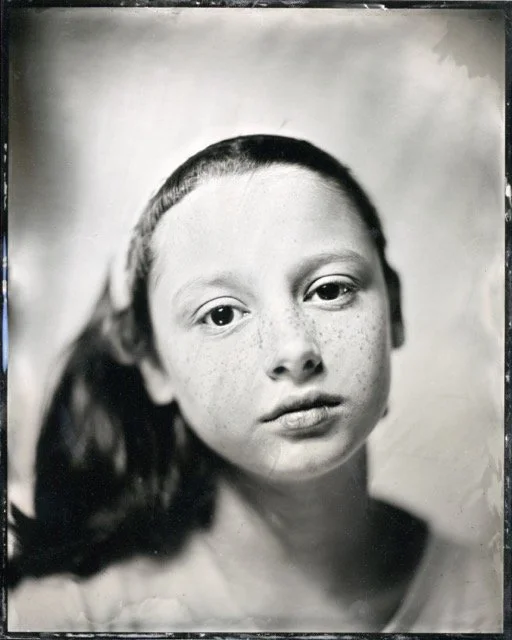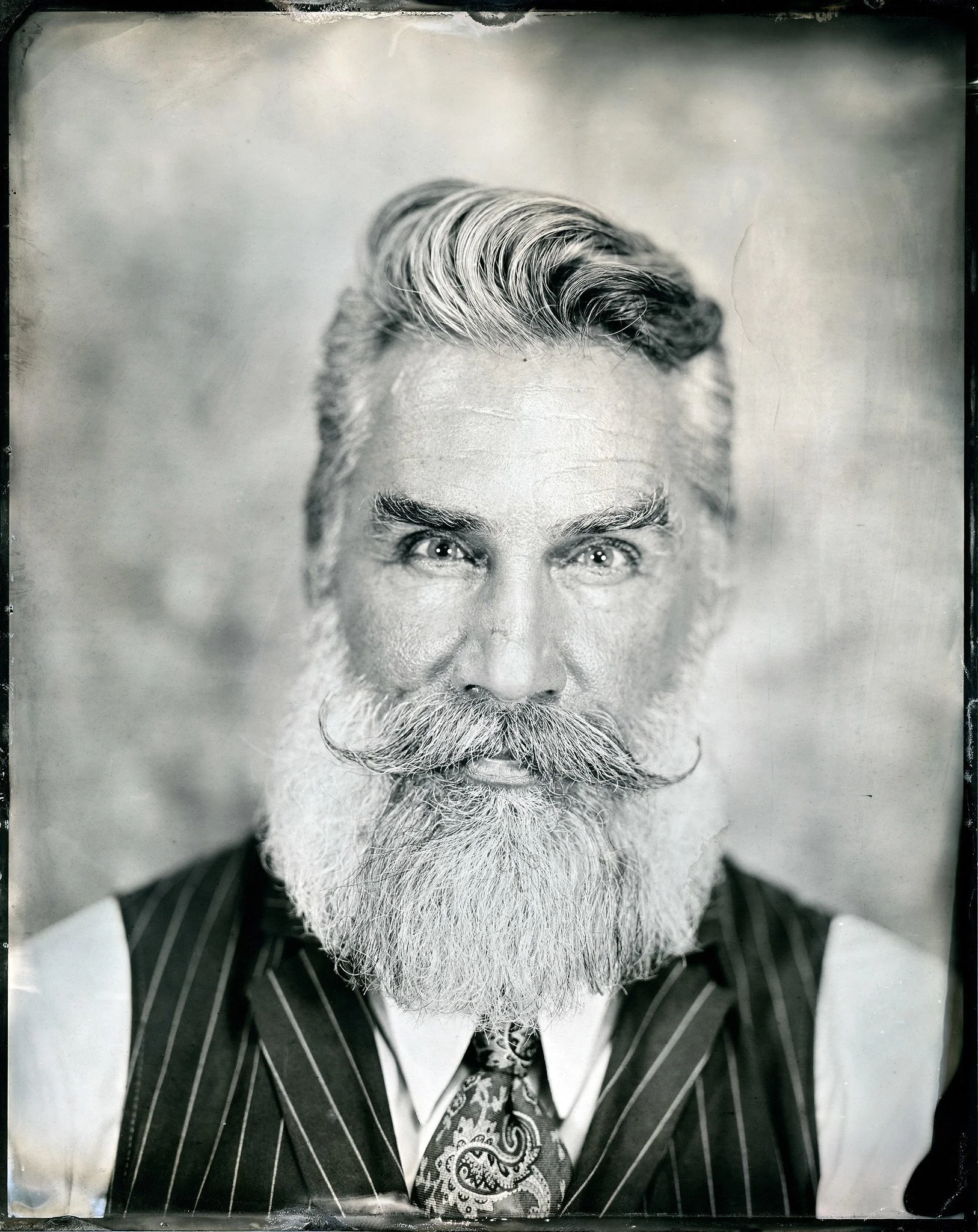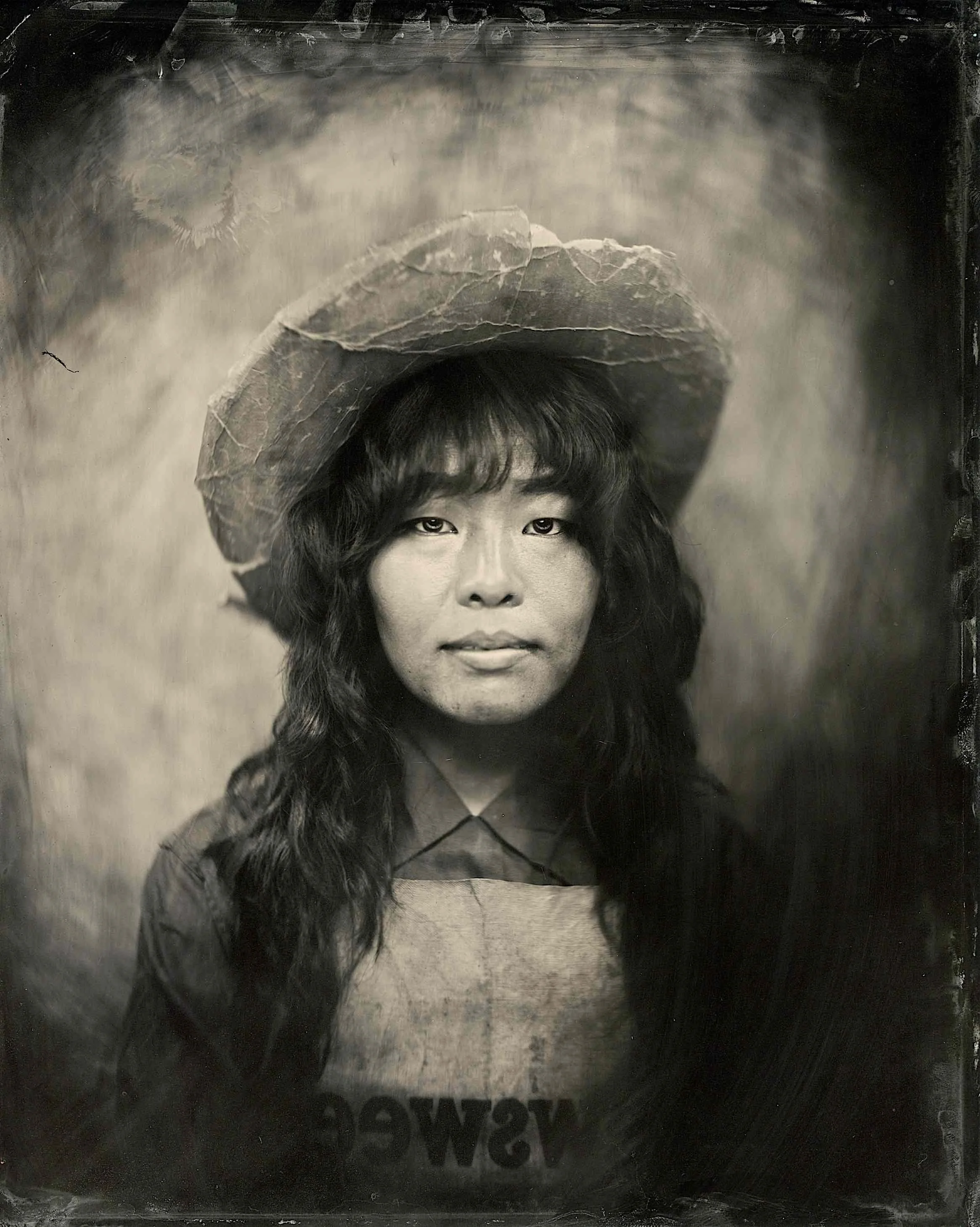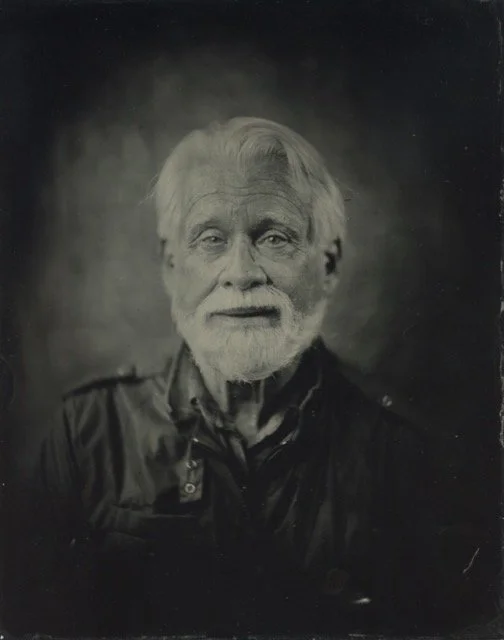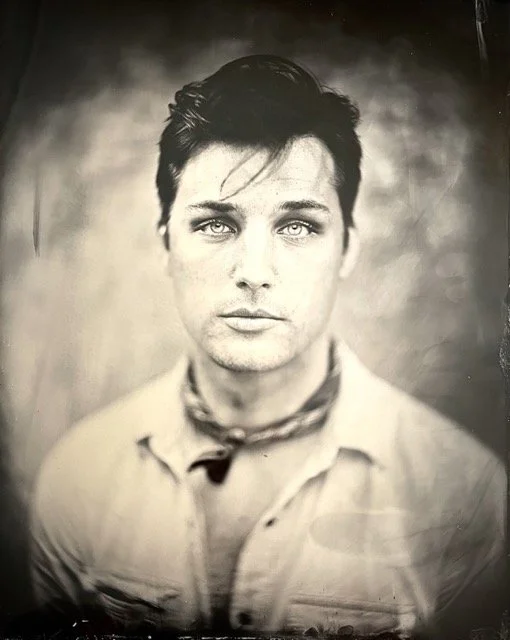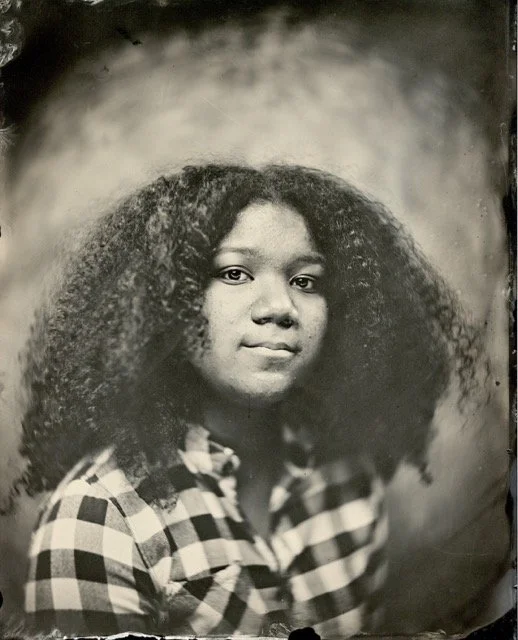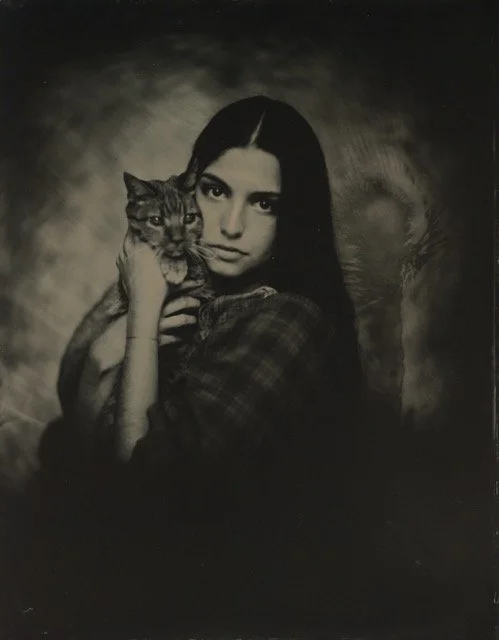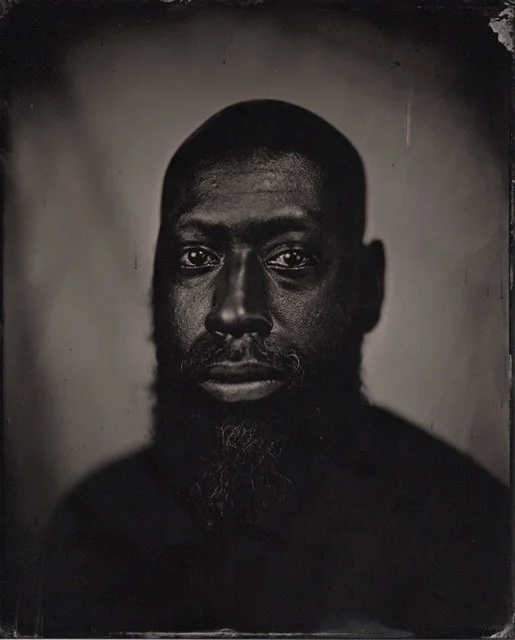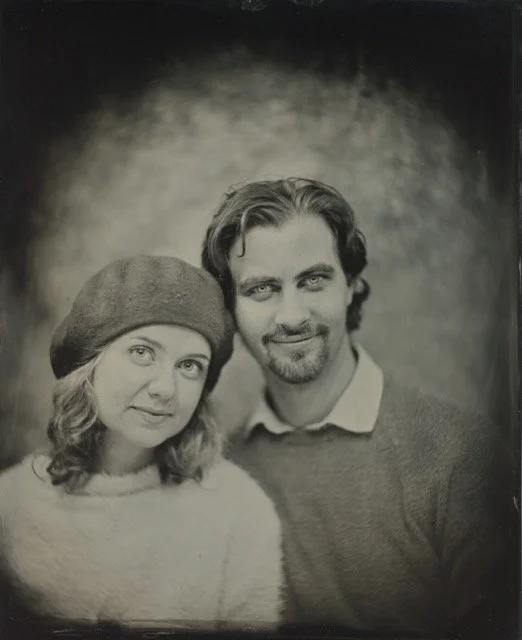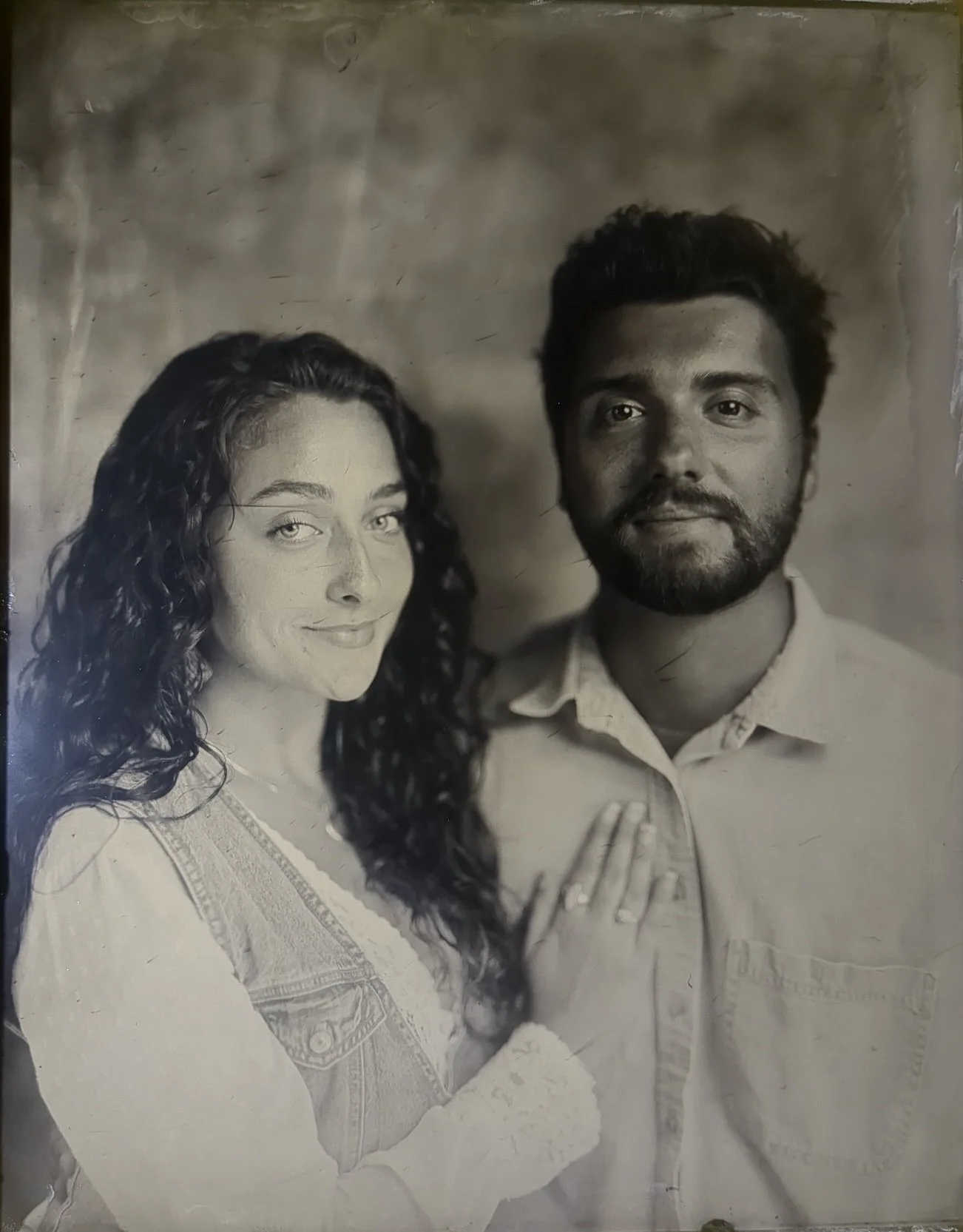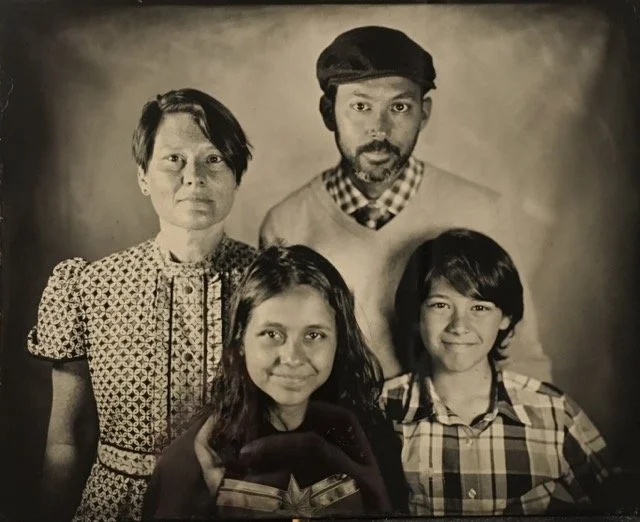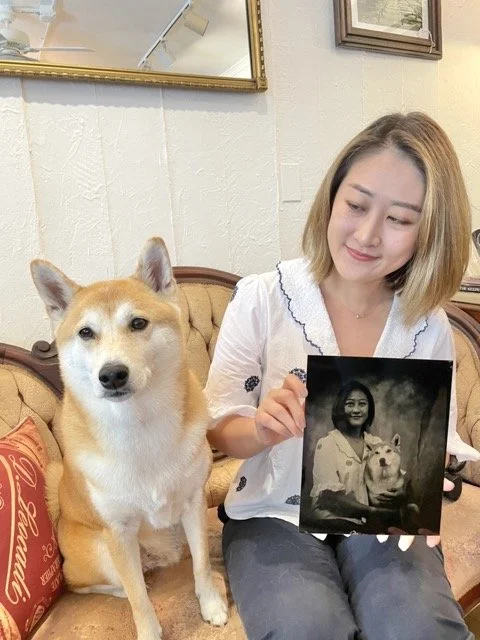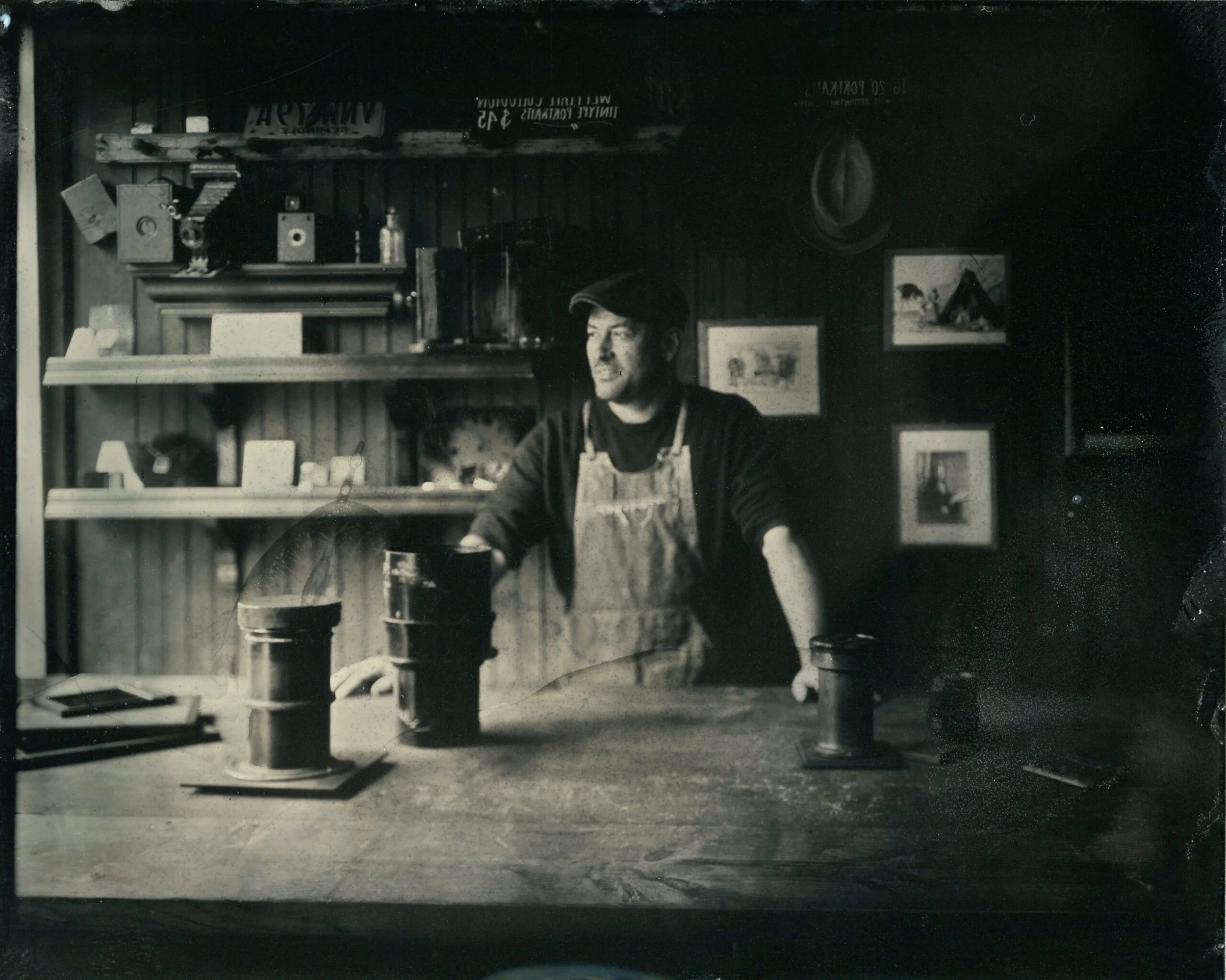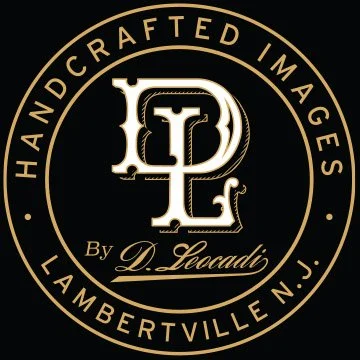Every tintype portrait session with Daniel Leocadi starts with a personalized consultation, ensuring your vision is captured in a truly unique way. Using the traditional wet-plate collodion process, each tintype is meticulously handcrafted. The metal plate is poured and prepared in the darkroom just moments before your portrait is taken, making every tintype an exclusive work of art. After the exposure, the plate is developed immediately, unveiling a one-of-a-kind image with a rich, timeless quality.
The magic of tintype photography lies in its individuality—no two plates are ever alike. Each handcrafted tintype takes on its own unique character, with subtle imperfections and details that make it an irreplaceable piece of art. After your portrait is captured, the final stage—fixing—reveals the image in all its glory, transforming a simple metal plate into a lasting memory.
Daniel Leocadi’s tintype portraits don’t end with the image itself. Every tintype comes with a high-quality digital scan and a protective varnish to preserve your artwork for generations. The varnish, often skipped by other studios, is a vital step to protect your tintype from tarnishing, dust, fingerprints, and damage. Whether created in the studio or on location, each tintype is carefully crafted, finished, and delivered with care.
Choose from a variety of tintype sizes, all capturing the soul and character of this historic art form. Let Daniel Leocadi’s tintype portraits offer you a timeless keepsake, connecting the past to the present in a way that only this unique medium can.


